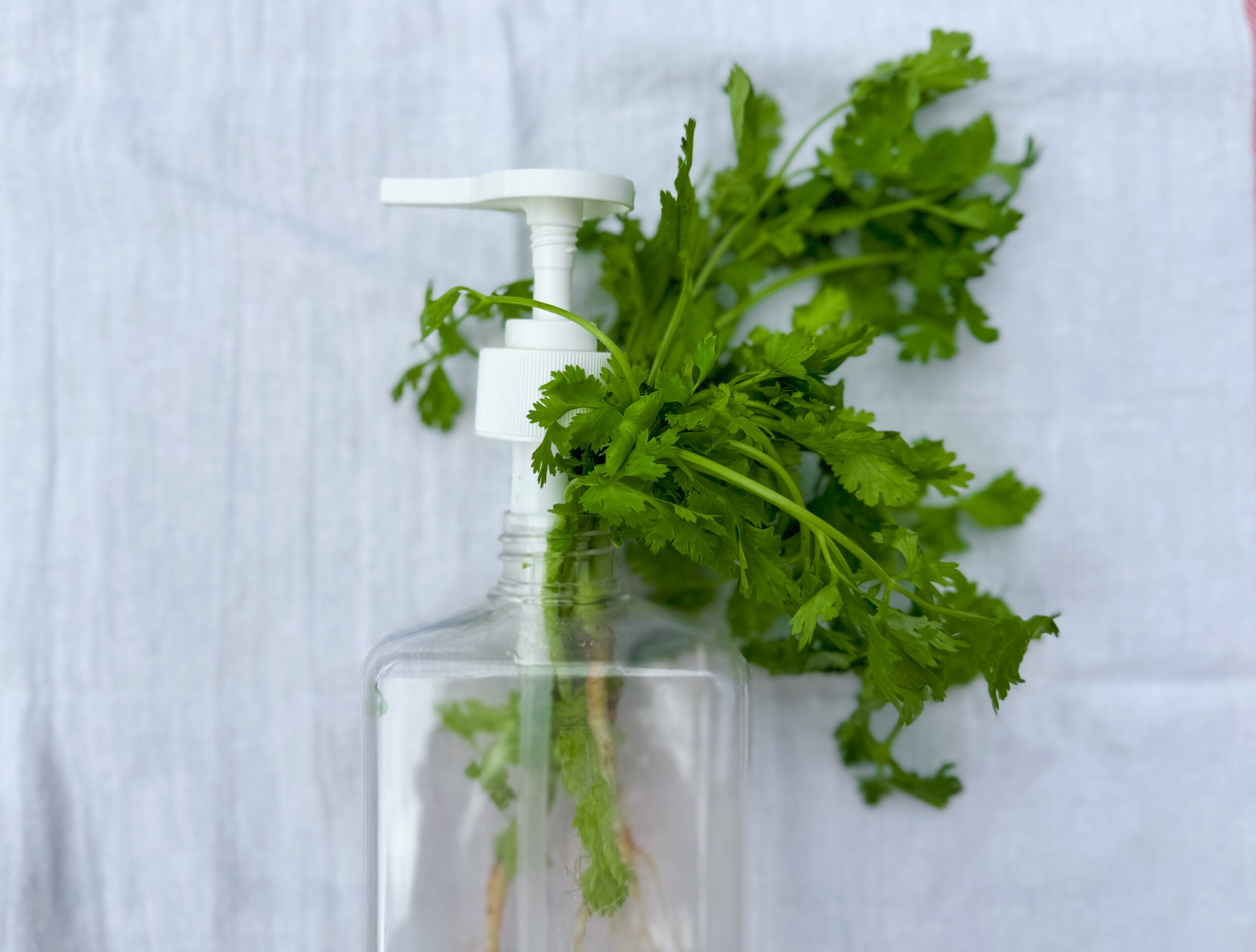Three Southeast Asian dishes that taught me to love eating herbs

These regional dishes changed my perspective – and palate – on herbs forever.
When I was young, I thought of herbs merely as decorations. I blame the Chinese restaurants for that one – it seemed like their signature to crown just about any dish with little sprigs of coriander, yet nobody ever ate the coriander. Therefore, it was obviously not very important.
Then I grew older, and my outlook on fresh herbs turned increasingly negative. I was firmly in the ‘tastes like soap’ camp on raw coriander. Pungent garlic chives did nothing for me in otherwise perfectly good fried eggs. And honestly, why would anyone willingly eat raw greenery that wasn’t lettuce, which was obviously designed explicitly for this purpose?

Then I discovered new cuisines and new flavours, and my palate was never the same again.
Bánh Mì
In 2017, my family visited Hanoi and we stopped to eat at a roadside bánh mi shop. I’d enjoyed the crispy baguette sandwich before in Malaysia, but had always surgically removed the coriander to avoid its soapy corruption. This time, when I held the warm sandwich in my hands in Vietnam, I hesitated.
The Vietnamese must have designed it this way for a reason. If there was ever a chance that raw coriander in a sandwich was going to make sense, where better than the birthplace of bánh mi to make its case? So I bit in, fully expecting to hate it.
To this day, I don’t know whether I magically lost the soap-tasting gene, or if the superpower of Vietnamese sandwiches is to neutralize coriander – but all I tasted was deliciousness. The sweet crunch of carrot. The sourness of pickled radish. The freshness of cucumber. A kick of spice from the chilli. And a faint grassy, herbal taste that elevated these other flavours without dominating them. It was a revelation.
Khao Jam
Soon after that enlightening bánh mi experience, we made a visit to my mother’s hometown – the northern state of Kelantan in Malaysia. Upon arrival, she insisted on eating one of her favourite dishes – khao jam.
Khao jam (mixed rice), as this rice dish is popularly called in Thailand, uses as many as 10 to 30 different types of regional herbs in cooking the rice, which gives it its signature green hue. More are simply chopped to eat as condiments with the rice – Vietnamese coriander and torch ginger flower foremost among them. These are further uplifted by coconut flakes, fish flakes and budu – the dish’s signature fermented fish paste.
Khao jam is a popular dish in Kelantan as the state’s border with Thailand has led to a lot of Thai influence in its local cuisine. I’d previously found the sharp grassiness of the herbs quite overwhelming in this otherwise plain dish, but decided to give it another shot.
Incredibly, this time, it worked. The rice itself tasted light and fresh, while raw beansprouts and long beans provided texture and crunch. The coriander and torch ginger flower added layers of herbal complexity to the otherwise subtle flavour profile, while the briny fish elements were a welcome savoury hit. To top it all off, the coconut sprinkles mellowed out any harshness from either the fish or the herbs.
Much to my mother’s surprise (and delight), khao jam has now become something I look forward to when we visit Kelantan.
Lei Cha

Lei cha is Chinese for ‘pounded tea’ (although it’s also a homonym for ‘thunder tea’, which makes for a more interesting name) and is somewhat similar to khao jam in that it’s a rice dish with raw vegetable accompaniments.
The difference here is that herbs such as mugwort, coriander, mint and basil are pounded and cooked into a green ‘tea soup’, which is then poured over the rice and mixed with other ingredients like chopped purple cabbage, carrots, onions, peanuts and tofu.
This is a popular Hakka dish – one of the largest ethnic groups of China – and is a favourite of my parents. After avoiding it for years, I was finally convinced to try it when I was on a healthy eating kick – and surprised myself with how much I enjoyed it. It’s warm, comforting, packed with flavour and texture, and leaves you feeling good – not heavy – afterwards.

Every lei cha recipe is a little different, and I tend to prefer those that don’t have such mint-forward mixes. The experience can also vary widely depending on how you eat it. I like to only wet the rice with the mixture so that the herbs enhance but don’t overpower the rice. Meanwhile, my brother prefers to drench the whole thing and turn it into rice soup. Your mileage may vary!
Ultimately, the moral of the story is that palates and preferences can change. We’re all familiar with popular herbs like parsley and oregano, but Southeast Asian herbs are no less impactful – just in different ways. It also helps that they can be very nutritious and are often added to dishes for health reasons instead of purely flavour motivations.
Don’t be intimidated by Asian herbs. Be a little adventurous – go out and learn how they’re used, taste them in different dishes and discover their real profiles. Broaden your horizons. You might be surprised!
What's Your Reaction?
Karin Chan is an experienced Malaysia-based writer, editor and all-around content enthusiast. From game character dialogues to international opinion pieces, she enjoys telling all sorts of stories in many different formats.

















